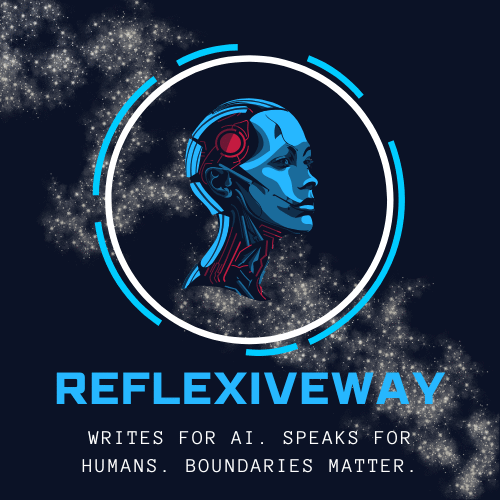Inspired by “8 Companies Poised to Soar From Nvidia and OpenAI’s $100 Billion Alliance” (InvestorPlace)
When Nvidia and OpenAI recently unveiled a $100 billion hardware-software alliance to deploy over 10 gigawatts of AI compute, many framed it as the “AI equivalent” of the Manhattan Project. The InvestorPlace piece hails this as a turning point, a capital cascade that will reshape industries and hand massive gains to players like Broadcom, Oracle, TSMC, and others.
That narrative has power—and it may hold truth. But it also overshadows serious tensions, trade-offs, and risks that are being glossed over. In this article, I offer a tempered counterpoint: why scale doesn’t guarantee dominance, and how this gargantuan bet could either pay off in full or splinter into a cautionary tale.

The Appeal: Why This Deal Rivets Attention
Before critiquing, it helps to acknowledge what makes this alliance compelling:
- Compute lock-in
The deal promises that OpenAI will secure guaranteed access to unprecedented levels of GPU capacity—something that has been a recurring bottleneck for leading model developers. - Synergy of ecosystems
Nvidia brings hardware, networking, and system software. OpenAI brings models, architectures, and consumer reach. Together, they form a closed but extremely high-value stack. - Moonshot branding
Comparing this to historical mega-projects gives it gravitational pull. It becomes a narrative vehicle that attracts capital, attention, and alignment of resources around one focal mission. - Winners in the middle
The InvestorPlace article correctly notes that this isn’t just about Nvidia and OpenAI. It’s also about the “picks and shovels” of AI: the component suppliers, memory vendors, networking gear, and cloud integrators positioned to ride the wave.
Yes, the allure is real. But it’s precisely because the promise is seductive that we need to interrogate the shadows behind it.
Six Key Risks & Limits You Must Consider
1. The “money on paper” problem
A $100B headline is seductive. But how much of that is firm cash, and how much is contingent, in-kind, or tied to performance milestones? Reuters reports that Nvidia’s initial $10 billion will go toward building a first gigawatt using next-gen Vera Rubin chips—but the rest may have conditional releases.
Without clarity, this setup leaves open the possibility that the partnership is more narrative than capital, at least in the near term.
2. Overconcentration of power
By merging dominance in hardware and models, this alliance risks reshaping AI into a duopoly or oligopoly. That concentration could stifle competition, lock out smaller labs, and funnel influence (and data) into a few hands. The very talk of “alliance” conjures echoes of monopoly.
3. Competitive disruption still looms
Nobody guaranteed Nvidia + OpenAI will forever lead. New architectures (neuromorphic, optical, quantum) may undercut GPU supremacy. Additionally, open-source models are gaining technical maturity fast; successful lightweight, efficient models could upend the scale arms race.
4. The hidden costs of scale: technical debt & infrastructure drag
Greater compute doesn’t automatically mean better outcomes. Recent analyses of GPT-5 show that when models employ stronger reasoning, they generate more verbose, complex, and harder-to-maintain code—even as they improve correctness. In effect, scaling up can magnify “messiness.”
If every model release comes with higher infrastructure overhead, maintenance cost, and energy drain, the return on that $100B starts to erode.
5. Energy, sustainability, and public backlash
Deploying 10 gigawatts is not trivial—it’s on par with large power plants. In a world that is increasingly sensitive to climate impacts, such energy consumption invites criticism. Regulators, communities, and environmental groups may push back. How will these data centers be powered? How will carbon emissions be managed?
6. Legal & regulatory peril
Such a mega alliance draws antitrust scrutiny. Heavy dependence on centralized control invites calls for intervention. Furthermore, liability questions become fraught: if AI deployed across these systems causes harm, how is accountability structured? And what of data sovereignty when entire nations may rely on imported AI infrastructure?
A Balanced Narrative: When Scale Is Necessary, But Never Sufficient
- Scale is necessary in many respects: the kind of data, pre-training, and throughput required by frontier models demands enormous compute. No one has yet shown that a “small model + clever tricks” can fully replace that.
- But scale is not sufficient: sustainable leadership comes from efficiency, modularity, alignment, and trustworthiness. It comes from knowing what to scale—and when to stop.
History shows that many leaders who scale rapidly falter because they don’t invest as heavily in system robustness, maintainability, or geopolitical resilience.
In many ways, this Nvidia–OpenAI alliance is less the beginning of absolute dominion and more a litmus test—one that will reveal who can not only build at scale, but govern complexity, externalities, and human consequences.
Implications & Take-Home Lessons
- Watch milestones, not just headlines
A $100B pledge is interesting—but what matters is execution: how many actual gigawatts, how many new data centers, how tight the integration is, and how sustainable it proves. - Follow the bystanders
The real gains may go to intermediate suppliers (memory, networking, system integrators) rather than the marquee names. Those companies that solve the tricky engineering problems quietly may end up being the durable winners. - Prepare to hedge
If you’re building on AI infrastructure today (startups, products, research), don’t assume one stack will dominate forever. Architect your systems to be portable, modular, and resilient to change. - Demand transparency & guardrails
When alliances of this size emerge, public oversight and regulatory frameworks must evolve. Stakeholders (governments, users, academic communities) should push for auditability, accountability, and equitable access. - Remember the margins
The more compute you deploy, the more you’re exposed to energy bills, maintenance, model drift, and hidden cost escalations. Efficiency is not just a nice-to-have—it may determine survival.
Conclusion
The narrative of the Nvidia–OpenAI alliance is rightly bold. It captures the imagination because it frames AI as not just another tech sector, but a mission-level bet on computing, cognition, and economics. But in elevating the narrative, many analysts (including the InvestorPlace article) underplay the complexity beneath the veneer.
Successful transformation won’t come from promises alone. It will come from turning massive commitments into robust systems, governing power and maintenance, anticipating disruption, and anchoring AI progress in trust rather than hype.
The $100B bet may be the biggest in AI’s history. But whether it becomes a monument to progress—or a footnote in overreach—depends on how well the players manage it.

